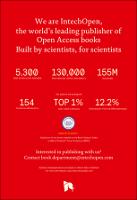Chapter High and Efficient Production of Nanomaterials by Microfluidic Reactor Approaches
| dc.contributor.author | Sebastian Cabeza, Victor | |
| dc.date.accessioned | 2021-06-02T10:07:51Z | |
| dc.date.available | 2021-06-02T10:07:51Z | |
| dc.date.issued | 2016 | |
| dc.identifier | ONIX_20210602_10.5772/64347_262 | |
| dc.identifier.uri | https://library.oapen.org/handle/20.500.12657/49148 | |
| dc.description.abstract | The in vivo analysis of a model organism, such as the nematode Caenorhabditis elegans, enables fundamental biomedical studies, including development, genetics, and neurobiology. In recent years, microfluidics technology has emerged as an attractive and enabling tool for the study of the multicellular organism. Advances in the application of microfluidics to C. elegans assays facilitate the manipulation of nematodes in high-throughput format and allow for the precise spatial and temporal control of their environment. In this chapter, we aim to illustrate the current microfluidic approaches for the investigation of behavior and neurobiology in C. elegans and discuss the trends of future development. | |
| dc.language | English | |
| dc.subject.classification | bic Book Industry Communication::T Technology, engineering, agriculture::TG Mechanical engineering & materials::TGM Materials science::TGMF Mechanics of fluids | |
| dc.subject.other | C. elegans, chip-based, manipulation, microfluidics, model organism | |
| dc.title | Chapter High and Efficient Production of Nanomaterials by Microfluidic Reactor Approaches | |
| dc.type | chapter | |
| oapen.identifier.doi | 10.5772/64347 | |
| oapen.relation.isPublishedBy | 09f6769d-48ed-467d-b150-4cf2680656a1 | |
| oapen.relation.isFundedBy | FP7-PEOPLE-2012-CIG | |
| oapen.grant.number | 321642 | |
| oapen.grant.acronym | PLATFORM2NANO |

